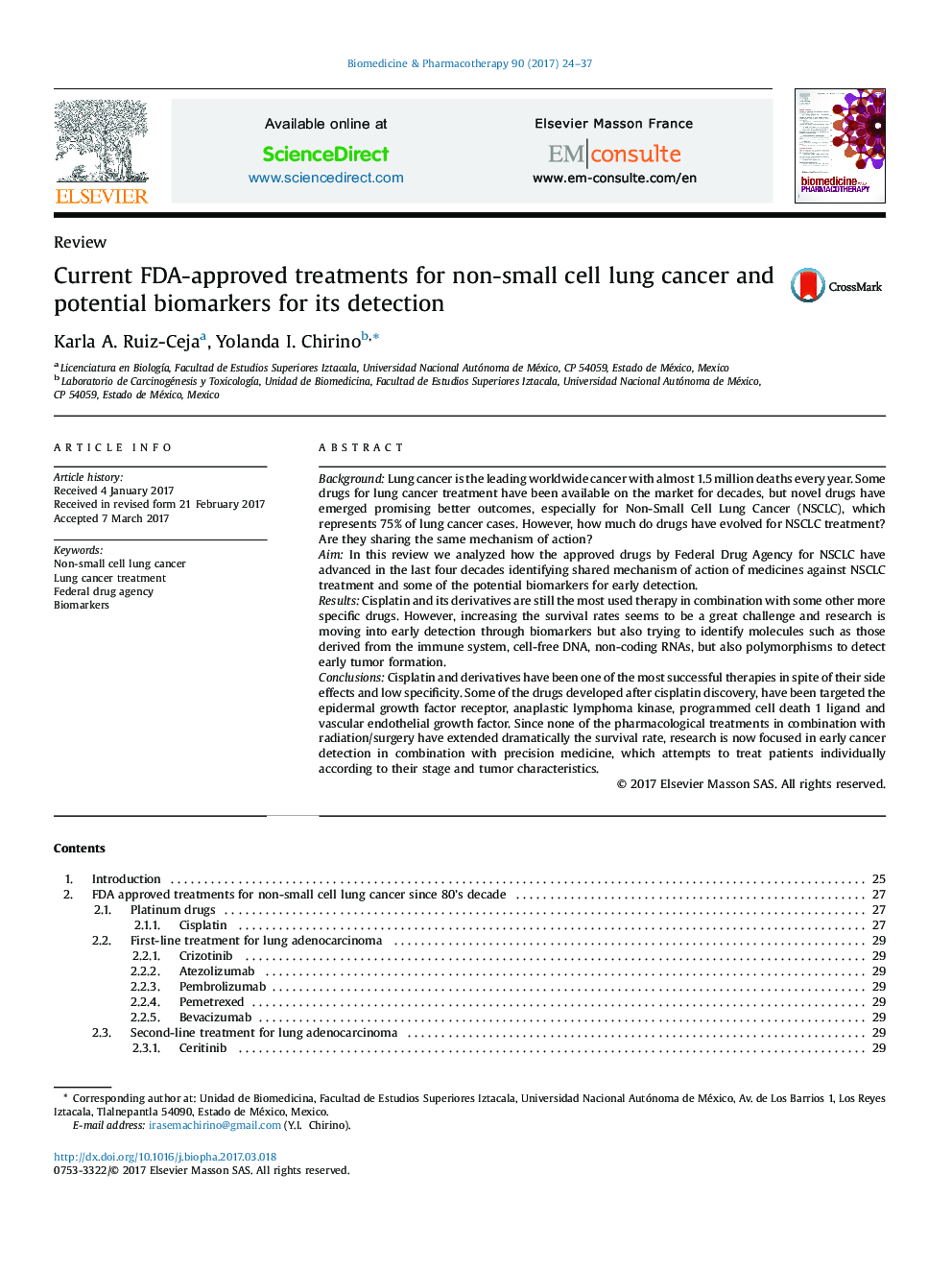| Article ID | Journal | Published Year | Pages | File Type |
|---|---|---|---|---|
| 5553002 | Biomedicine & Pharmacotherapy | 2017 | 14 Pages |
BackgroundLung cancer is the leading worldwide cancer with almost 1.5 million deaths every year. Some drugs for lung cancer treatment have been available on the market for decades, but novel drugs have emerged promising better outcomes, especially for Non-Small Cell Lung Cancer (NSCLC), which represents 75% of lung cancer cases. However, how much do drugs have evolved for NSCLC treatment? Are they sharing the same mechanism of action?AimIn this review we analyzed how the approved drugs by Federal Drug Agency for NSCLC have advanced in the last four decades identifying shared mechanism of action of medicines against NSCLC treatment and some of the potential biomarkers for early detection.ResultsCisplatin and its derivatives are still the most used therapy in combination with some other more specific drugs. However, increasing the survival rates seems to be a great challenge and research is moving into early detection through biomarkers but also trying to identify molecules such as those derived from the immune system, cell-free DNA, non-coding RNAs, but also polymorphisms to detect early tumor formation.ConclusionsCisplatin and derivatives have been one of the most successful therapies in spite of their side effects and low specificity. Some of the drugs developed after cisplatin discovery, have been targeted the epidermal growth factor receptor, anaplastic lymphoma kinase, programmed cell death 1 ligand and vascular endothelial growth factor. Since none of the pharmacological treatments in combination with radiation/surgery have extended dramatically the survival rate, research is now focused in early cancer detection in combination with precision medicine, which attempts to treat patients individually according to their stage and tumor characteristics.
